-
CreatorTopic
-
09/29/2014 at 5:30 am #1852
 ErikanMember
ErikanMemberAfter reviewing the module content for Lesson 2, take some time to reflect back on what you learned and answer the following questions:
1) Think about the activity you completed in this module that distinguished between GPP goals, objectives, and activities. Take this opportunity to ask any questions or get clarifications about distinguishing between the three terms.
2) Describe two benefits of conducting stakeholder engagement throughout the entire trial process, and describe two potential consequences of not meaningfully involving stakeholders. For each example, list a measurable indicator of success.
-
CreatorTopic
-
AuthorReplies
-
-
12/09/2014 at 8:46 am #2525
 John MdluliMember
John MdluliMember<p style=”margin: 0cm 0cm 10pt;”>1. By Goal we refer to a broad statement about what the community engagement program or strategy want to achieve. Goal can also refer to the intended long-term outcome that the community engagement program want to achieve. An example of a goal include: the description of techniques and strategies to build and sustain relationship with stakeholders through various stages of the research life-cycle.</p>
<p style=”margin: 0cm 0cm 10pt;”>2. Objectives on the other hand refers to the expected achievements that are specific and well defined, measurable, attainable, realistic and time-bound. Example of objectives will include the development of stakeholder data base consisting of all relevant stakeholders in a specific during a specific time period.</p>
<p style=”margin: 0cm 0cm 10pt;”>3. Activities refers to specific actions conducted to achieve the project objectives. Identification of key stakeholders and consultation meeting that are important to the development of stakeholder data-base</p> -
11/10/2014 at 10:07 am #2256
 Leader Kanyiki NgooyiMember
Leader Kanyiki NgooyiMemberI liked the fact that the invitation to take on the GPP course was extended to various RC staff members at the HIV R4P conference. to avoid time and responsibilities conflictsat the RC level, all staff need to at least understand GPP guidelines and their significance and importance, then the staff member responsible for its implementation will allocate enough time and commitment to it without problem. problems come when others don’t understand the why. stakeholders is very critical in the research field, so we’ve got to train our own staff members for a better understanding of GPP guidelines.
-
10/22/2014 at 4:24 am #2132
 PongpunMember
PongpunMemberIn response to Anne’s question, about how can better commit the necessary time and resources to ensure active participation during stakeholder engagement planning. In the past, we never have stakeholder engagement plan. We have only communication community plan, recruitment plan and community plan. I just heard about stakeholder engagement planning in last year. I think that if we have stakeholder engagement planning that clearly and set goal, schedule time, activities clearly and evaluate each step that we do, it perfect. For my site, it is so hard to do, we need to have more staff for responsible this work and need to train more about writing plan, understanding about stakeholder engagement plan.
I hope to get experience more after finished this course.
-
10/17/2014 at 8:57 am #2079
Siriporn
MemberDear Patchata,
I agreed with you the rumor makes bad recruitment rate. And also May be effect on the rate of follow up. Communication activities are important for make clearly picture and make trust for community and all stakeholder also. -
10/17/2014 at 8:56 am #2078
Siriporn
MemberDear Patchata,
I agreed with you the rumor makes bad recruitment rate. And also May be effect on the rate of follow up. Communication activities are important for make clearly picture and make trust for community and all stakeholder also. -
10/17/2014 at 8:47 am #2077
Siriporn
Member2) Describe two benefits of conducting stakeholder engagement throughout the entire trial process, and describe two potential consequences of not meaningfully involving stakeholders. For each example, list a measurable indicator of success.
Stakeholder engagement that is ongoing through the entire trial process builds trust between the researchers and the stakeholders, which might facilitate more frequent, more appropriate, more constructive inputs from stakeholders at critical time points.
Examples of not meaningfully involving stakeholders are inappropriate and not trust. The recruitment rate may be slowly and not accept from community may be cause of high rate lost to follow up . -
10/17/2014 at 8:34 am #2076
Siriporn
Member1) Think about the activity you completed in this module that distinguished between GPP goals, objectives, and activities. Take this opportunity to ask any questions or get clarifications about distinguishing between the three terms.
When I think about Goals and Objectives, Goals is a big picture and not specific to a single trial, while the objective are the set of actions. Without clear goal and objectives it is almost sure that the stakeholder engagements plan wills not effectiveness as the result stakeholder requirements will not be clear, sometimes goals and objectives might be unclear because stakeholders lack the experience to describe what they really understand. Defining clear can take time and lots of communications are important. Could you please advise.
-
10/13/2014 at 3:22 pm #2027
 Jauhara NanyondoMember
Jauhara NanyondoMemberNondo I agree, when researcher’s don’t effectively engage the community or stakeholders, they should think of facing hardships in penetrating the community. That will most likely lead to resistance and eventually failure of the study. It is hard in this situation to have a plan B, succeed in this kind of set up.
Marie says better engagement for the study means success for the study, i totally agree with her statement. At this level anything that comes up from the community or other stakeholders is handled on time and mutual understanding promoted.
-
10/12/2014 at 9:41 pm #2009
Agnes Nondo
MemberIn response to Anne’s question, we do not set goals routinely, the common practice at our site is to set objectives, I think it is because we do not distinguish an objective and the goal. Regarding the collective strategic planning, yes I agree with you that this leads to better result because the parties involved brainstorm together and pick on the best option for the better output.
Secondly, I agree with Juara Nanyondo that the informed community develops a sense of ownership hence is accountable to both the research and the community.
-
10/12/2014 at 11:13 am #2008
Agnes Nondo
MemberIn response to the two questions from Erikan. -TO distinguish, a goal, objective. activity- the word objective and goals are rather confusing because they both describe a thing that ons wants to achieve but with the explanation from lesson 2, they mean different things.
– A goal is a general statement , it describes a big picture of a target
An Objective- is a specific result achieved from a set of activities to accomplish goal. An objective must be SMART- i.e Specific, Measurable, Achievable, Realistic and Timely
An activity -describes the process of what when how how many times an action will done to support the objective
question 2- the two benefits of engaging stake holders through the entire process- Involving stake holders can build trust which can ultimately lead to support for both the study and the participants
2. it can lead to transparency and that can lead to better decision making
Consequences of not meaningfully involving stakeholders-if there is no trust it will be very difficult for the study to penetrate the community, it will not be possible for the study to re-strategies in case of failures at any stage of the study as they will no one to provide check and balances through the life cycle of the project.
The measurable indicators for example 1-increased numbers , increase number of recruitment materials distributed,increased numbers of screening recruitment, reduced or no rumors and misconceptions and good retention rate.
2. improved retention rate if they were low , improved retention, timely effective implementation of protocol, stakeholder engagement plan and community working plan plan amendments
-
10/10/2014 at 3:49 pm #1987
 Jauhara NanyondoMember
Jauhara NanyondoMemberI agree with Marie, it is real success if stakeholder engagement is well done by the researchers. Various efforts by are put together to have this successful. It takes a committed staff designated to do that role on behalf of the Principle Investigator. It takes a budget that will facilitate community activities like hiring meeting venues, public address system, refreshments for the community people who attend the community meetings.
Leader, that is true that a well informed community will easily own the research in their community.
Therefore this holds community engagement as an important step in the HIV prevention research if the scientific efforts of finding a solution to HIV are to be co-owned by the community which is affected by the HIV.
-
10/10/2014 at 3:33 pm #1986
 Jauhara NanyondoMember
Jauhara NanyondoMemberQuestion 1.
A goal is what the project is trying to achieve, it is a big picture you want to achieve. The objective is the set of activities to guide the process to achieve the goal for the project in a specified period of time. Activities is what is done to achieve the objective.
Question 2.
Describe two benefits of conducting stakeholder engagement throughout the entire trial process, and describe two potential consequences of not meaningfully involving stakeholders. For each example, list a measurable indicator of success.
Constructive stakeholder engagement helps ensure the ethical and scientific quality of research as well as its relevance to community. Community stakeholders have unique expertise to contribute to the research process. They possess important knowledge and understanding of the local HIV epidemic, concerns of marginalized people and the local priorities that the trial funders, sponsors and implementers may lack. Measurable indicator of success- A community willing to join the research study i.e good recruitment and retention numbers.Engagement also improves stakeholder knowledge and understanding of the research processes, building research literacy and competencies. This in turn, helps stakeholders to contribute more effectively to the process of guiding the research and helps to address the power imbalance between the research team and the community stakeholders.
Measurable indicator of success- A well informed team of advocates for the study since their research literacy had been improved by the engagements they had with the researchers in their community.Consequences of not engaging stakeholders with an example of the outcome
When researchers do not meaning fully engage stakeholders, it might result in failure to develop trust and respect for the research that they are bringing to the community. Nontransparent situations maximize misunderstandings and increase chances of unnecessary conflict and controversy. For example a scientific research being conducted in a country while the Ministry of Health is not briefed about it. In this situation the community stakeholders may decide to refuse their fellow community members to take part in the study. This would lead to wasted resources from the side of the research sponsor/funder.
Failure for meaningful engagement may lead to sabotage from other broader stakeholders who may not have clear understanding of the research. Media that is not engaged very well on the new research in their country/community may decide to undo what the researchers are planning to do despite the importance it may have to bring on the public health table.
-
10/06/2014 at 6:57 pm #1947
 AnneMember
AnneMemberSo, I think there is agreement that concerted, deliberate stakeholder engagement is critical from the outset of the research process! But even strategic goal setting for engagement requires energy, time, and resources…..Real and effective planning must be more than a compulsory ‘check’ on the list.
How can you better commit the necessary time and resources to ensure active participation during stakeholder engagement planning (e.g. goal setting, etc) at your trial site? Is it always that easy?
-
10/06/2014 at 11:10 am #1946
 Marie MicheleMember
Marie MicheleMember1) GPP goals is a big picture as Patchara said. It is about establishing an effective stakeholders engagement program, and build a long term sustained relationships. The GPP Objective is needed to achieve the GPP goals. Activities is how and what would be done to achieve the objectives, by who and when it should be done?
2) Engaging stakeholders through out of the study; it is success of the study itself, it makes work easier, and more trust of the results from the study. Because engaging stakeholders through out of study, researcher get beneficial advise for the study and information needed to conduct smoothly the study. Rumors are addressed on time, recruitment and retention of participants done without difficulties and adherence is good. etc all that, it would not happen without engaging stakeholders. Stakeholders are our guidance, that why we own them a good capacity building in HIV prevention studies.
-
10/06/2014 at 9:55 am #1944
 Leader Kanyiki NgooyiMember
Leader Kanyiki NgooyiMemberPatchara and others have just said it: goals, objectives and activities.
And on the impact, it is easy for rumours and misinformation to emerge where there is no the right information. and to ensure the that community has the right information, the stakeholders education plan and stakeholders engagement plan should answer that question. where there is the right and correct information there will be confidence, trust and support. ownership by the stakeholders is also very crucial, so considering their inputs is valuable.
-
10/06/2014 at 2:44 am #1937
Patchara
Member1) Distinguished between GPP goals, objectives, and activities.
Goal is draw big picture and spend long time to achieve the goal. Objective is sub purpose of goal and activity is how to achieve the objective. I think the problem of researcher aspect is goal. Most of goal is related about policy. We can not derive it unless stakeholders agree with it. The other thing is some researcher teams do not conduct for long time such as cohort study. So goal is not necessary for the study sometimes.2) Conducting stakeholder engagement throughout the entire trial process will make smooth conducting. Two examples of benefit are rumor mitigation and advisory mechanism. The rumor would be informed by stakeholders and methodology to solve problem will be done together. Access to hard to reach population would be received from stakeholders as well.
Examples of not meaningfully involving stakeholders are rumor and inappropriate of study site. The rumor makes bad recruitment rate. The recruitment rate and number of rumor are indicators of the problem. For study site, If we do not ask stakeholders’ opinion about study site, we would not have good place for the study for hard to reach population. -
10/05/2014 at 7:01 pm #1928
 John MdluliMember
John MdluliMemberBenefits of conducting stakeholder engagement throughout the entire trial
Stakeholder engagement through formative research assist research trial staff to have a better understanding of the socio-cultural norms, local power and dynamics, local perceptions, channels of communications and decision making. It also assist the research trial staff to have a better understanding of the HIV incidence and prevalence. Implementation of effective stakeholder engagement throughout the life cycle of the trial ensures stakeholder support for the current and future trial.
Consequences of not doing stakeholder engagement
Failure to implement community engagement can results in a lack of stakeholder support for the envisaged trial and future trials. This can also have a negative impact on stakeholder understanding of the trial progress.
-
10/05/2014 at 10:03 am #1927
 AnneMember
AnneMemberExactly, Pongpun!
And as we make our way through the GPP Blueprint in the upcoming work assignments, keep a running list of the key issues, barriers and opportunities related to your trial landscape that emerge as you answer the questions–these are what your engagement objectives should address!
-
10/05/2014 at 8:38 am #1925
 PongpunMember
PongpunMemberDistinguished between GPP goals, objectives and activities is
Goal is draw big picture which same as main/final purpose of the study. It show that what is the final point of this implement. Same as what is the most important thing that we expect to occur after we done/implementation.
Objective is sub purpose of goal. It should able to measure, clearly, have time.
Activity is how to achieve the objective. It should clearly explanation step by step and measurement. It would be good if state who, how, when and where. Each objective may has many activities.
Benefit that should has stakeholder engagement are help community to understand trial and solve any issues prior to violence and effect study.
-
10/04/2014 at 1:16 am #1923
 Laura PotterMember
Laura PotterMemberIn response to Anne’s questions about routinely setting goals and objectives for stakeholder engagement, I will say that the community programs team I work with does have routine strategic meetings where such things are discussed, but usually we tend to jump straight into activities (community outreach, education, building, etc. and recruitment venues) without enough emphasis on the goals and the objectives that can lead us to more targeted and successful activity planning. I will definitely bring this up at our next meeting so that we can take some time to reflect on the goals and objectives more at our future strategic meetings!
-
10/04/2014 at 1:12 am #1922
 Laura PotterMember
Laura PotterMember1) Goals can sometimes feel too broad and overarching to fully grasp or even imagine completing. Objectives provide a way to break down amazingly optimistic goals into manageable, scalable steps that seem realistic and achievable. Activities are the extension of those objectives – turning brainstorming into action! At least, that’s how I conceptualize the three. I welcome others’ feedback on that description.
2) Stakeholder engagement that is ongoing through the entire trial process builds trust between the researchers and the stakeholders, rather than darting in and out for feedback and only periodically seeming to value stakeholder opinions or value their autonomy. Continuous engagement shows true respect for stakeholders, and feeling respected breeds mutual trust and understanding, which are usually intangible but could be measured by questionnaires about how much the stakeholders feel they matter in the grand scheme of the research. If the stakeholders do not feel respected and valued, they are likely to back out of supporting the trial, and as has been seen in multiple trial sites around the world, this can result in the shutting down of entire studies. Furthermore, just as the research evolves, so too does stakeholder opinion and contribution; stakeholders need to be a part of the evolution of a study, from its conception to its endpoint, and this could be ensured by mandatory check-ins at certain timepoints over the course of the trial, such as monthly CAB meetings for example, where all parties get to provide updates and feedback in an organic way. Interruption of this constantly co-evolving research process would undermine the entire point of involving stakeholders in the first place by decontextualizing the study halfway through its duration; this could lead to decreased retention and negative views of the study and/or study products, site, or funders that could last long after the study was completed.
-
10/03/2014 at 11:02 am #1920
 Marie MicheleMember
Marie MicheleMemberDear Colleagues,
Totally agree with you Ann, collective strategic plan for stakeholders is the key for a better plan. Stakeholders themselves would be involved in that strategic plan as they are the ones who know what would be done to allow them to accomplish their responsibilities as stakeholders. Some time researchers may decide to set up goals, objectives and activities for stakeholders, but they might get problems because they do not know the community well as stakeholders do. Of course the collective strategic plan for stakeholders will take us from short term thinking to a much longer, because, this means that we have a good and strong start, which allow us to know were we are going, which challenges we might face, and plan before hand solutions, and most of challenges are already avoided during the collective strategic plan. Actually I am supporting that idea because that what has been saving our site.
-
10/03/2014 at 9:11 am #1919
 AnneMember
AnneMemberBuilding on this discussion, I would also like to ask:
How many of you are routinely setting goals and objectives for stakeholder engagement at your trial sites? Is this common practice? And, if so, what have been the benefits for your research team?
In my experience, I think collective strategic planning for stakeholder engagement can take us from short-term thinking to a much longer-term perspective. Being able to distinguish and define goals, objectives, and activities can lead to better results through better decisions, identification of more opportunities, and consideration of more factors. Do you all agree?
-
10/03/2014 at 4:46 am #1917
Mathias Wambuzi
MemberHello Team, I summarize a goal in its broadness as the long term big and imaginary picture identified from the world of current challenges. Objectives as the road map to the destiny(goal) while activities are mechanics of getting there.
Looking at the benefits of engagement throughout the entire process, this could be seen in terms of short and long term benefits.Continuous engagement promotes sustainable support and bridges the gap between trials. Participatory M&E is facilitated by this continuous engagement and cultivates innovative approaches to effective engagement.
-
10/02/2014 at 6:30 pm #1906
Anonymous
InactiveRona I couldn’t agree with you more! It is so important for the research community to conduct formative research. Learning about cultural norms, how a community defines itself and gaining trust/ building relationships are crucial to a trial’s success. Long term stakeholder engagement goals can also be created during the formative research process.
-
10/02/2014 at 6:08 pm #1903
 RonaMember
RonaMemberStacey,
Measuring activities does seem so much easier than measuring overall impact. Being conscious of the overall goals and objectives is a critical step in determining how and to what extent the activities influence/effect the community and the research.
-
10/02/2014 at 6:05 pm #1902
 RonaMember
RonaMemberI loved the clear examples of goals vs. objectives vs. activities. It’s important to make sure as Cathy said that the activities being conducted are really in service of the overall goal or objective. And conversely, to identify activities that will help you meet the goals and objectives that you’ve identified as important.
I think each part of the research process has unique circumstances that can benefit from stakeholder input. For example, during formative research activities, working with stakeholders is critical in learning about the community and how it operates. Without this understanding, researchers could jeopardize their ability to work in a given region in an effective and respectful manner. The trials might not be acceptable or may not be designed in a way that is feasible to conduct. A study could be thwarted before it begins or recruitment may be slow because of a lack of stakeholder trust and support, or because it lack what is realistic for participants.
-
10/02/2014 at 5:45 pm #1901
 StaceyMember
StaceyMemberHello learners! I know this is a long module! I hope it’s given you a solid understanding of the guidelines document. The structure is straight forward, hopefully making it easy to use as GPP implementers.
I’m very interested to hear your thoughts on GPP goals vs. objectives vs. activities. Being able to distinguish between these three is fundamental to monitoring and evaluating GPP programs… so to my mind, fundamental to a strong program. Activities will be the easiest to measure, but often don’t reflect impact. Planning your activities within a strategic framework to reflect objectives and greater goals will be the key to showing how your individual activities lead to positive impact for the research and the community. Lots of thinking has gone into this, as well, with the M&E Toolkit we circulated earlier.
Please keep your thoughts coming!
-
10/02/2014 at 10:50 am #1892
Cathy Slack
Member1) It was thought-provoking to consider participation at these various levels of abstraction – I suspect the danger is getting so caught up in activities that one loses sight of whether the activities are truly operationalising an over-arching goal.
2)Benefits of sustained engagement surely include more trust and less suspicion that researchers are not merely doing ‘engagement blitzes’ when it suits them (such as around recruitment); which might facilitate more frequent, more appropriate, more constructive inputs from stakeholders at critical timepoints. The hard part must be when research teams and other stakeholders themselves don’t agree about when an input is ‘appropriate’ or ‘constructive’.
-
-
AuthorReplies
- The forum ‘GPP Discussion Forum’ is closed to new topics and replies.


